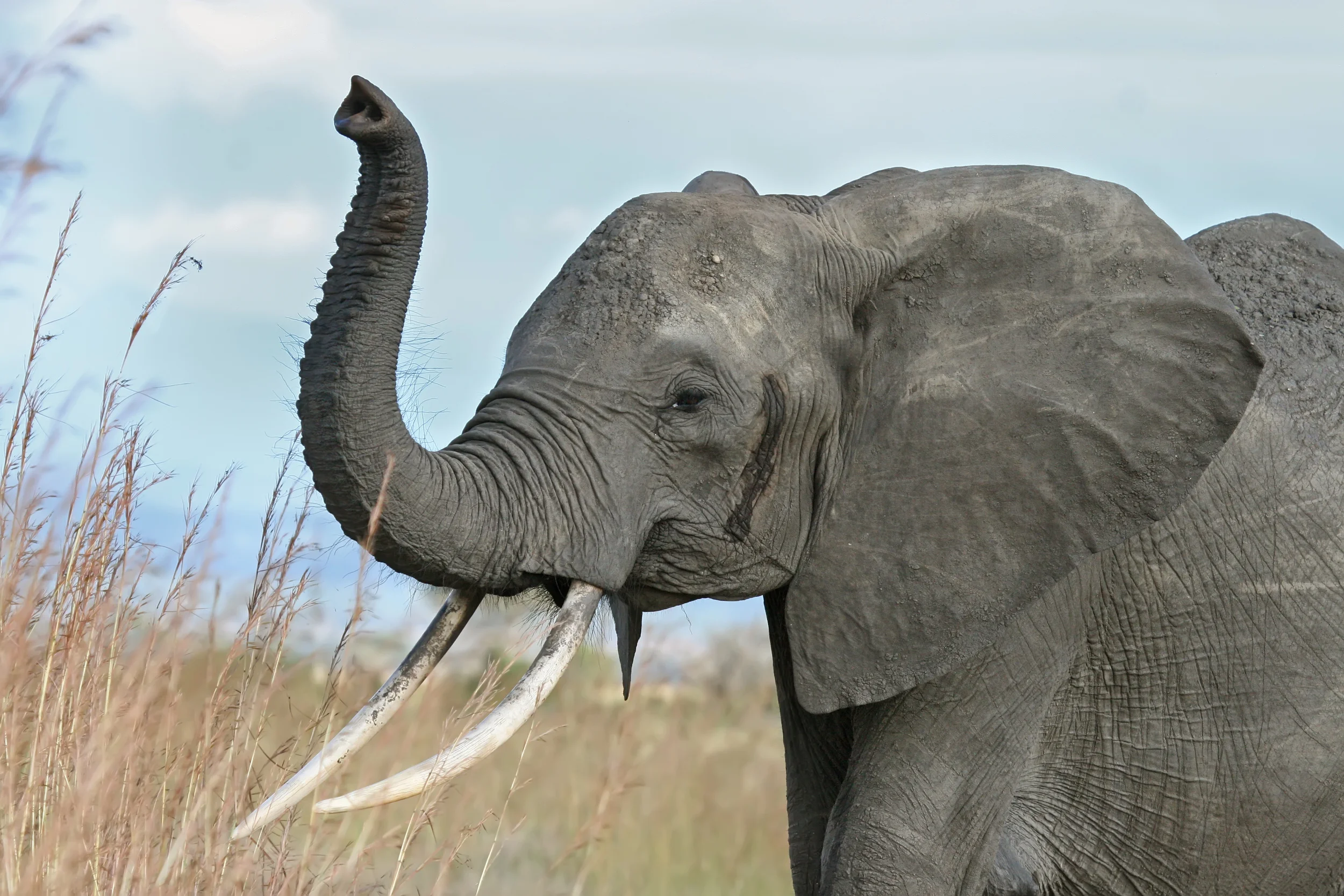OVERVIEW
The African elephant is the largest animal walking the Earth. Their herds wander through 37 countries in Africa. They are easily recognized by their trunk that is used for communication and handling objects. And their large ears allow them to radiate excess heat. Upper incisor teeth develop into tusks in African elephants and grow throughout their lifetime. There are two subspecies of African elephants—the Savanna (or bush) elephant and the Forest elephant. Savanna elephants are larger than forest elephants, and their tusks curve outwards. In addition to being smaller, forest elephants are darker and their tusks are straighter and point downward. There are also differences in the size and shape of the skull and skeleton between the two subspecies.
Forest elephants, a distinct subspecies of African elephants, are uniquely adapted to the forest habitat of the Congo Basin, but are in sharp decline due to poaching for the international ivory trade. It is estimated that probably one quarter to one third of the total African elephant population is made up of forest elephants.
DID YOU KNOW?
- African elephants have been rated as vulnerable by the IUCN.
- On average, African elephants reach 11 feet in height, with a length of anywhere between 19 and 24 feet.
- African elephants usually reach to be about 6 tons in weight.
- The African elephant's scientific name is loxodonta africana.








